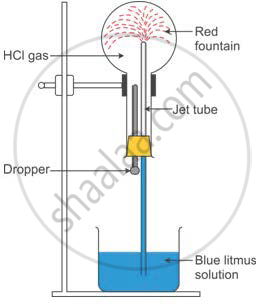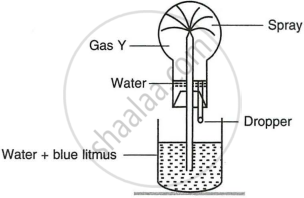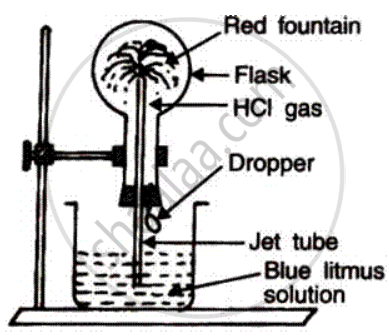Advertisements
Advertisements
Question
Study the figure given below and answer that questions that follow:
(i) Identify the gas Y.
(ii) What property of gas Y does this experiment demonstrate?
(iii) Name another gas which has the same property and can be demonstrated through this experiment.
Solution
(i) The gas is HCl (hydrogen chloride) gas.
(ii) Extreme solubility of hydrogen chloride gas is demonstrated by the fountain experiment.
(iii) Ammonia gas is another gas which has the same property which can be demonstrated through this experiment.
APPEARS IN
RELATED QUESTIONS
The aim of the Fountain experiment is to prove that ______.
Study the figure given below and answer the questions which follow:

- Identify the gas Y.
- What property of gas Y does this experiment demonstrate?
- Name another gas which has the same property and can be demonstrated through this experiment.
How is the gas collected and why?
Name two gases which combine chemically to form a solid.
Give reason for the following:
Dilute hydrochloric acid cannot be concentrated by distilling (boiling) the dilute acid.
Dilute hydrochloric acid is added in turn to a mixture of iron and sulphur and to the compound formed between iron and sulphur. Name the gas formed in each case.

(a) Name the experiment illustrate above.
(b) Which property of hydrogen chloride is demonstrated by this experiment?
(c) State the colour of the water that has entered the round-bottomed flask.
The following question is pertaining to the laboratory preparation of hydrogen chloride gas.
Write the equation for its preparation mentioning the condition required.
The aim of the fountain experiment is to prove that
Identify the terms for the following:
A method used to collect HCl gas.
